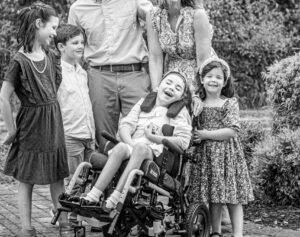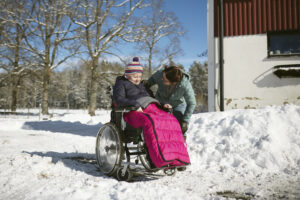Autism spectrum disorder (ASD) encompasses a broad range of symptoms, and these symptoms can manifest differently among individuals. Data from the Centers for Disease Control and Prevention indicates that approximately 1 in 36 children have received a diagnosis of autism, emphasizing the prevalence and impact of this neurodevelopmental condition. Additionally, autism is identified at nearly four times the rate in boys compared to girls, although the exact reasoning for this gender disparity is not fully understood.
Research suggests that a complex combination of genetic and diagnostic factors contributes to the imbalance in the prevalence of autism between genders. Ongoing research is vital in unraveling the complexities of autism and its diverse presentations. Tailored approaches in diagnosis and support for both boys and girls on the autism spectrum are crucial.
Signs of autism in children
No single symptom can conclusively determine an autism diagnosis. Everyone with autism is unique, and manifested traits can vary widely. It is crucial to recognize and appreciate this diversity, particularly in understanding the differences in how autism presents in boys and girls.
Understanding the gender-specific presentations of autism is essential to ensure that children receive personalized and effective support. By tailoring resources and assistance based on an understanding of how autism may manifest differently in boys and girls, we can create more inclusive and empathetic environments. This approach helps guarantee that every child with autism receives the specialized attention required to navigate their unique experiences, fostering a more supportive and inclusive society for individuals on the autism spectrum.
Here are some common signs to look for in a child you think may be autistic:
-
- Difficulty making or maintaining eye contact
- Monotone speech
- Difficulty understanding and responding to conversational cues such as tone of voice, sarcasm, or body language and facial expressions
- Delayed or limited speech development
- Repetitive behaviors and movements
- Fidgeting and difficulty remaining still
- Behavioral problems such as disruptiveness, aggression or noncompliance
- Difficulty adapting to new social situations
- Adhesion to routine
- Intense interest in certain hobbies or objects
- Problems with academics
Autism in boys
The current criteria for autism diagnosis was created based on behavior research that primarily focused on boys, though it presents differently in girls. Boys with autism tend to exhibit more noticeable social and communication challenges than girls. Boys also are more likely to have lower motor skills than girls.
The way autism presents in boys compared to girls is not a reflection of the severity of autism; it just means the signs can show up in different ways.
Autism in girls
There is a growing awareness of the challenges girls may face in receiving an autism diagnosis. Autism is often a diagnosis missed in girls due to stereotypes and biases that it only affects boys. Girls are also commonly subject to a missed autism diagnosis due to cultural beliefs that dismiss certain presentations of autism in girls as “typical girl behavior.” Behavior such as talking less in class may be more noticeable in boys than in girls, as it is a behavioral norm for girls.
As explained by Dr. Constantino, Professor of Psychiatry and Pediatrics at Washington University in St. Louis, “a girl who scores very high for a girl as far as ASD traits may not look that impaired when compared to a boy with ASD. But she is still scoring extremely high compared to the rest of the girl population and may benefit from clinical help and support.” Essentially, girls may have to exhibit more traits or a higher severity of symptoms to receive an autism diagnosis.
Girls are often more able to mimic social norms, a behavior known as masking. Masking can result in a delayed or missed diagnosis. Regular masking can harm a person’s well-being, resulting in exhaustion, anxiety or depression.
Steps for diagnosing autism
Diagnosing autism requires a comprehensive assessment consisting of a developmental screening, comprehension and communication evaluations, and overall behavioral assessments. The diagnostic process and the steps following diagnosis can vary. Early intervention and support are critical.
Maxim’s ABA and behavioral services
Maxim provides ABA therapy to children with autism and other developmental disabilities through home-based, school-based or center-based services. These services are only offered in some states, so contact your local office for more information. For more information on Maxim’s behavioral services, visit our autism care page.



